Introduction: Materials in Triply Cookware and Their Impact
Triply cookware, defined by its three-layer construction, combines different materials to deliver superior cooking performance, blending durability with heat efficiency. But what are the most common materials used, and how do they influence the cooking process? This article explores the key components of triply cookware and their effects on your culinary results.
The most common materials in triply cookware—stainless steel, aluminum, and sometimes copper—affect cooking through heat conductivity, durability, and non-reactivity.
Let’s dive into these materials and their roles in shaping your kitchen experience.
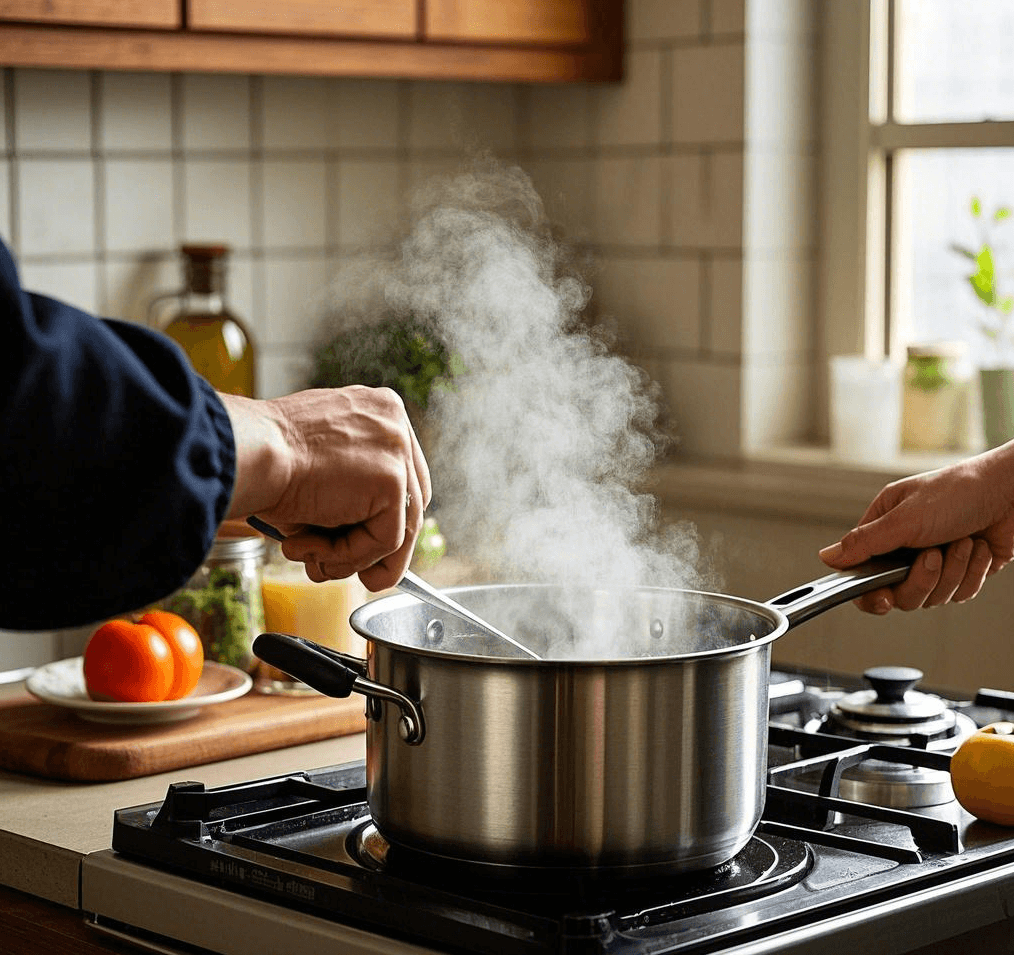
Why Is Stainless Steel a Core Material in Triply Cookware?
Stainless steel forms the outer layers of triply cookware, providing strength and unique cooking benefits.
- Durability: Grades like 304 or 316 resist corrosion and wear, ensuring longevity even with heavy use. The International Stainless Steel Forum touts its robustness.
- Non-Reactivity: Stainless steel doesn’t react with acidic foods like tomatoes, preserving flavors without leaching metals, a key advantage for sauces.
- Surface Quality: Its smooth finish, as noted by Triply Circle Titanium, supports easy cleaning and a natural non-stick patina over time.
Stainless steel enhances triply cookware with durability and flavor-safe cooking surfaces.
How Does Aluminum Contribute to Triply Cookware Performance?
Aluminum, typically the middle layer, is the workhorse of heat conduction in triply cookware.
- Heat Conductivity: Aluminum spreads heat evenly and quickly across the cooking surface, eliminating hot spots—perfect for searing or sautéing, per the Cookware Manufacturers Association.
- Lightweight Balance: While encased in stainless steel, aluminum keeps the cookware lighter than all-steel options, improving handling.
- Efficiency: Triply Circle Titanium highlights aluminum’s role in boosting energy-efficient cooking with rapid heat transfer.
Aluminum’s conductivity ensures triply cookware heats evenly, enhancing cooking precision.
What Role Does Copper Play in Triply Cookware?
Copper, though less common, is used as a core material in premium triply cookware for its exceptional properties.
- Superior Heat Response: Copper conducts heat faster and more evenly than aluminum, offering precise temperature control for delicate tasks like melting chocolate, as seen in high-end sets from All-Clad.
- Aesthetic Appeal: Sometimes visible on the exterior, copper adds a luxurious look, though it’s often fully clad for practicality.
- Trade-Off: Its higher cost and maintenance needs (e.g., polishing) make it rarer, but the payoff is unmatched heat performance.
Copper elevates triply cookware with top-tier conductivity and responsiveness, albeit at a premium.
How Do These Materials Work Together in Triply Cookware?
The synergy of stainless steel, aluminum, and sometimes copper defines triply cookware’s cooking prowess.
- Layered Benefits: Stainless steel provides a tough, non-reactive shell, while the core (aluminum or copper) drives heat distribution. This combo excels in tasks like braising or simmering.
- Balanced Design: The cladding process, detailed by Triply Circle Titanium, ensures seamless integration for durability and efficiency.
- Versatility: Together, they support varied cooking styles—stainless steel handles acids, and the core manages heat across stovetops.
The material trio in triply cookware combines strength, conductivity, and versatility for superior results.
How Do These Materials Compare to Alternatives?
Triply cookware’s materials stand out against single-layer or other multi-layer options, affecting cooking outcomes.
- Versus Pure Aluminum: Unclad aluminum conducts heat well but reacts with acids and warps easily—triply avoids these flaws.
- Versus Cast Iron: Cast iron retains heat longer but heats unevenly; triply’s core offers faster, more uniform results, as noted by Demeyere.
- Edge: The stainless-aluminum-copper mix balances practicality and performance better than most alternatives.
Triply cookware’s materials outperform single-layer options, offering a practical cooking edge.
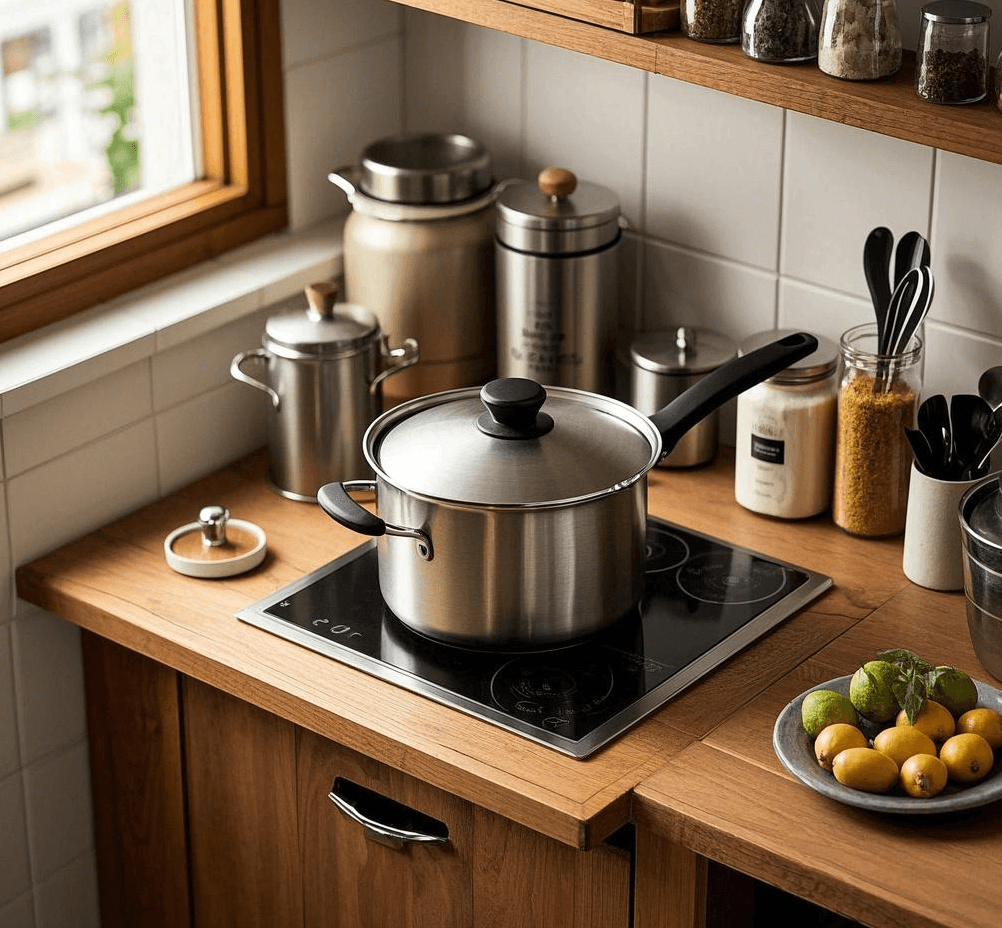
Claim: Materials Drive Triply Cookware’s Cooking Excellence
Stainless steel, aluminum, and copper—the most common triply materials—shape cooking through durability, even heat, and responsiveness. Their combined strengths make triply cookware a standout choice for diverse culinary needs.
Conclusion: Cooking with Triply’s Material Advantage
In my view, the materials in triply cookware—like those perfected by Triply Circle Titanium—are the secret to its success as of March 03, 2025. Stainless steel ensures safety and longevity, aluminum or copper delivers heat mastery, and together they elevate every dish. Understanding these materials helps you harness triply cookware’s full potential in your kitchen.

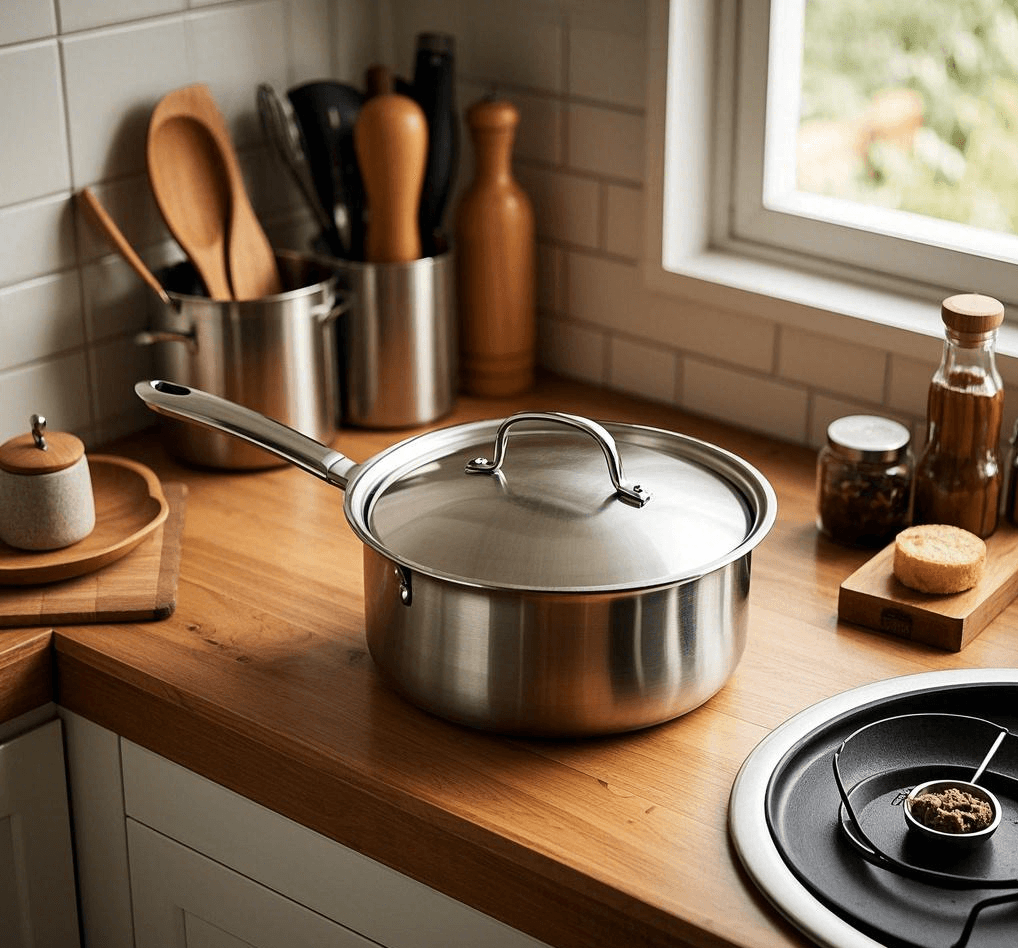

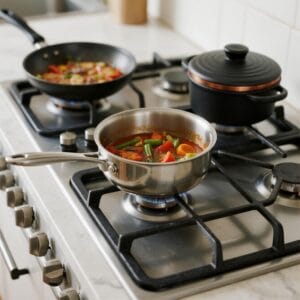
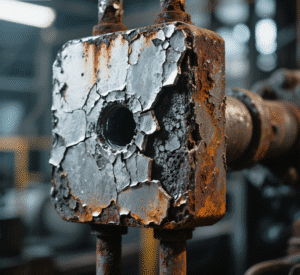


2 Responses
There’s noticeably a bundle to find out about this. I assume you made certain good factors in options also.
some need to be confirmed when you make some decision, all of us are learning to make it better.